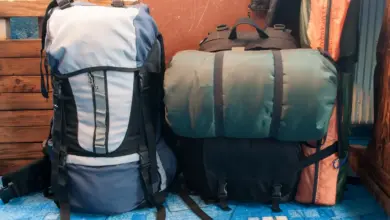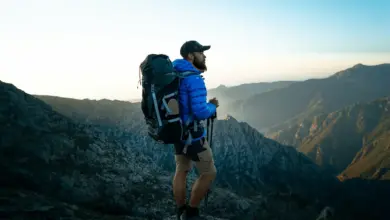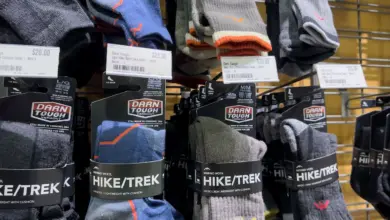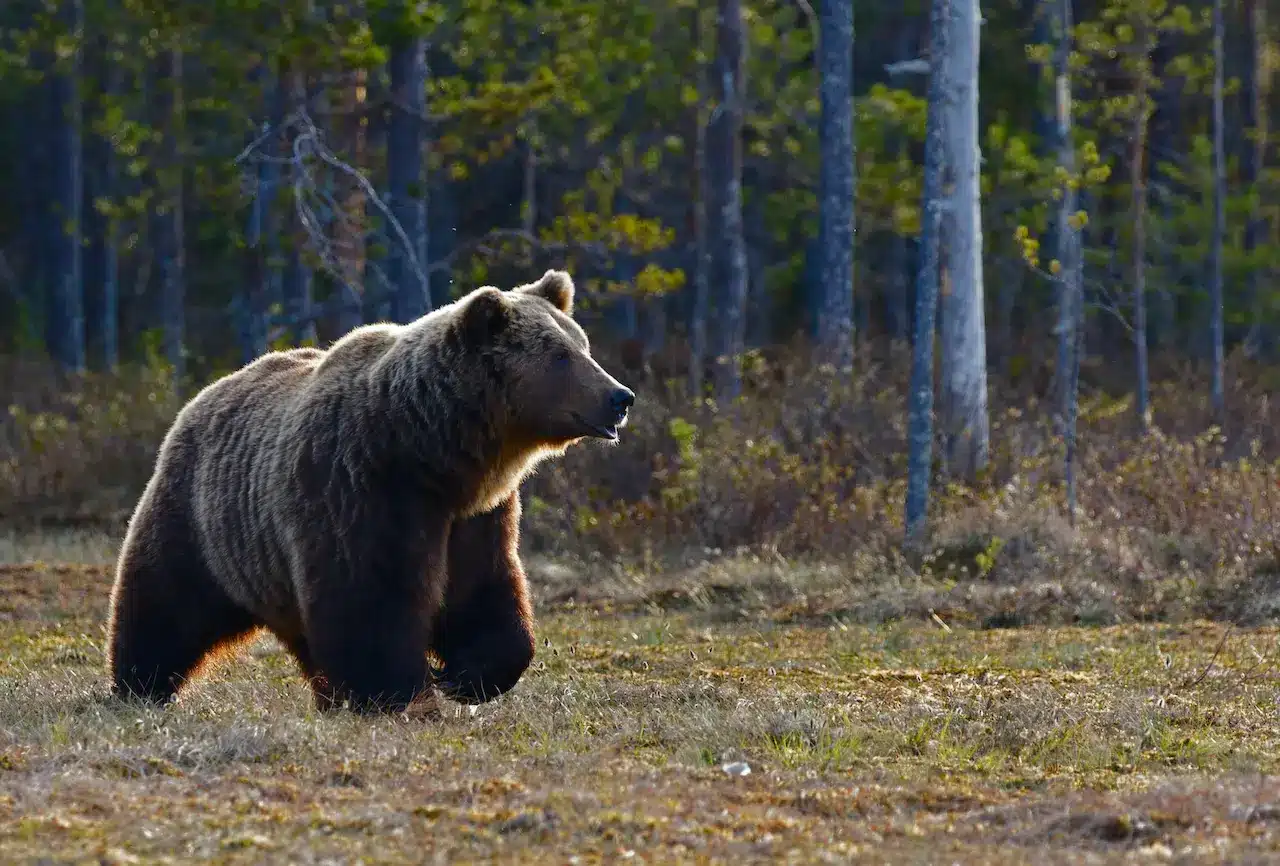Are Chacos Good For Hiking?
Are Chacos Good For Hiking? Yes, Here’s Why
Chacos are known to be super comfortable, but are they actually practical for hiking? If you ask this question online, you’ll get a lot of different answers, ranging from “Chacos are terrible for hiking” and “I love my Chacos”. So, which one is it? Can you hike in Chacos?
Yes, Chacos are fine for hiking. Like lots of footwear, a lot of it depends on the environment and personal preferences. I’ve hiked in everything from hiking boots, to sandals, to running shoes (see how to hike in running shoes), and even climbed mountains barefoot. It’s fair to say that Chacos can certainly be hiked in.
But while Chacos can be hiked, does it mean hiking in them is actually a good idea?
Can You Hike In Chacos?
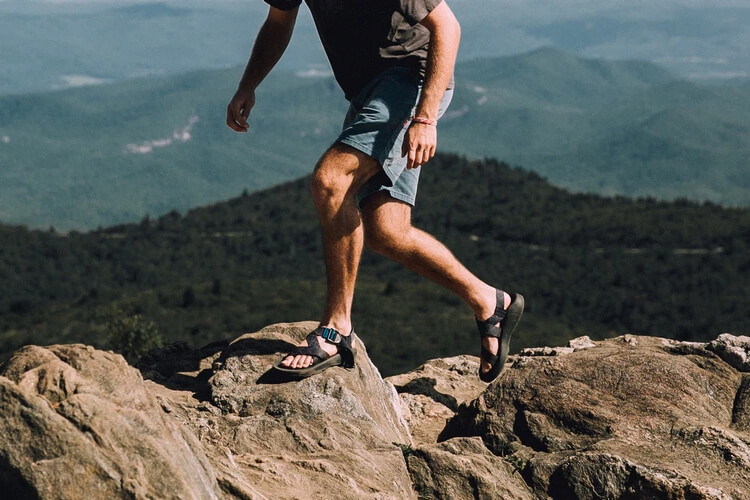
The simple answer is yes, you can hike in Chacos. However, there are a few main questions you should be considering when trying out hiking footwear.
- Am I used to wearing them?
- Do they actually have good traction?
- Are they broken in yet?
- Are they comfortable for me?
- Do they have good support?
For any hiking footwear, if you can answer all these questions in the affirmative, then it’s a pretty good bet that the shoe you want to wear can be used for hiking.
While Chacos may seem weird, there’s been people swear by them and don’t wear anything else. In fact, there have been people who thru-hike the Appalachian Trail and Pacific Crest Trail wearing Chacos. There have even been people who’ve run entire marathons in Chacos as well.
While Chacos have worked great for some people, it’s important to always find out what works best for you.
Why Chacos are Great for Hiking
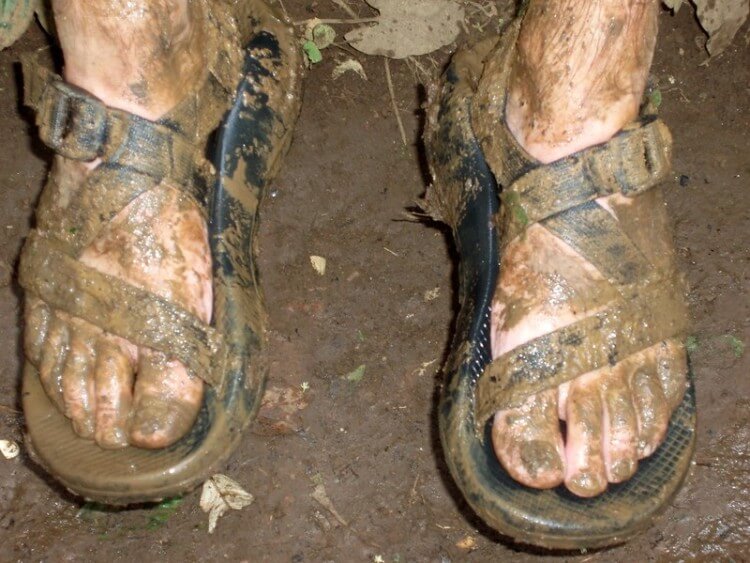
The main appeal to Chacos is support and comfort. The Chacos footbed is actually certified by the American Pediatric Medical Association. It has durable support that will last you a long time, along with great arch support.
Technically, the footbed is an orthopedic one, so you know it’s comfortable. But don’t take the name out of context and think they’re only good for schlepping around a nursing home. The material is quite durable.
And many hikers agree, Chacos last a long time. Here’s what a few hikers had to say:
My current pair has seen untold daily use since 2004, and is still alive, which is nothing short of remarkable.
Chacos are awesome. They last for a LONG time, are re-soleable, and hike well. I use them for technical canyoneering, long hikes, rock climbing approaches, running, and light climbing.
I wear my Chaco’s almost everyday and my current ones are over 2 years old and they are still in pretty good condition. I have done plenty of long distance hiking in them and have never had a problem with blisters or rocks/sand under my feet.
Here’s one video that sums why Chacos are great for backpacking:
Chacos are comfortable for another huge reason – your feet aren’t stuck inside shoes all day. On hot days, there’s nothing more breathable than wearing Chacos or cooling down in stream crossings. On long hikes especially, you don’t have to constantly change socks and your feet won’t turn into prunes.
And when it does come to river crossings, you don’t have to constantly swap footwear, change socks, or slop around in wet boots. While Chacos can of course get wet, they won’t hold water and dry quite fast. While others might avoid getting their feet wet, those with Chacos don’t have to worry about a thing.
Also, depending on what model you get, the Chaco’s footbed is designed to taper slightly upwards at the edges. This helps keep out dirt and pebbles that can become quite annoying when hiking in sandals.
The Downside To Chacos
While Chacos can be great on hikes, there are also downsides. I love sandals but I am well aware they aren’t for everyone.
The biggest complaint about hiking in Chacos is debris. Hiking on trails naturally kicks up debris like dirt, pebbles, and small sticks. This is why some hikers wear gaiters. While this can be a problem for boots, it’s an even bigger problem for sandals, including Chacos.
A lot of times debris will get stuck underneath your foot. If you wear sandals regularly, you’ll know how common this. While this isn’t dangerous, it is annoying. This causes you to stop for a moment to sweep out any debris from under your foot.
A similar problem is dust and dirt can build up under your feet and dry them out. While dry feet might not seem like a huge deal, if your feet get too dry, this can lead to some unpleasant cracking. However, this can be easily fixed by wearing socks.
Yet another obvious downside to Chacos is lack of protection. Jabbing your toes isn’t actually that common as the Chacos will take most of the blunt force. But what sometimes does happen is having sticks poke between your toes. Again, while not usually dangerous, it is annoying.
And lastly, while this isn’t a problem when hiking, your feet are more vulnerable to mosquitoes. This can also be easily fixed by using bug repellent.
You may also like Hiking in Converse, How Bad Is It Really?
Chacos and Blisters
Blisters when hiking are never fun. When it comes to Chacos and blisters, they can still happen – or they might not happen at all. Lots of people have different experiences because everyone’s foot and gait are so different.
When blisters do happen, it’s sometimes for the following reasons:
- Chacos are not broken in
- The strap is too lose or too tight
- The Chacos are the wrong size
If you do get Chacos, first make sure they are actually the right size. I’ve heard stories of hikers returning their Chacos only to find out they weren’t fitted right in the first place.
The next thing to try is to make sure they are broken in. If you’ve worn shoes all your life, your feet are expected to be a bit soft. That, combined with brand-new sandals, can lead to blisters. To fix this, start by going for short, easy walks and even jogs to help break in your Chacos. Over time, your Chacos will soften up in the right areas and your feet will toughen up.
You can also try adjusting the strap. Sometimes the strap may be too loose or too tight. If it’s too tight, it might cause too much friction when your foot is moving. On the other hand, if the straps are too loose, it might cause friction where there shouldn’t be. Chacos has a guide on how to adjust straps to make sure you are getting a good fit.
Another way Chacos can give you blisters is the toe strap. Some models have a strap that goes between your toes. While these models offer better stability, they can be bothersome for some people.
One easy fix to prevent blisters in Chacos is to wear socks. A favorite among hikers is the Injinji toe socks (Amazon). I wear a pair myself and they are quite nice. They allow your toes to move around a lot more. And if you are still getting blisters, you can even double up on the socks. Wearing two pairs of socks is a common trick to prevent blisters.
You may also like Can You Hike in Doc Martens?
What About Ankle Support?
This is a big one and often a little misunderstood. Obviously, Chacos don’t cover your ankles like high-profile hiking boots do, or even trail runners.
However, this isn’t that big of a deal because of the mechanics of ankle support. Ankle support actually comes from how well the heel of your foot is supported. This is where most of the ability to stabilize your ankle actually comes from.
Some people say that not allowing your ankle mobility and covering it with a high-profile fit is actually doing more harm than good. In the Chaco, the heel cup in the shoe is actually really strong, which in turn allows the heel of your foot to be supported, which then supports your ankle pretty well.
Even in regular hiking shoes, ankle rolls are going to happen sometimes. This doesn’t really happen with heavy hiking boots because there aren’t many places for your ankle to roll to. However, after breaking in your Chacos, your heel and ankle will actually get stronger and provide great support.
Another thing to consider is that Chacos have a tiny bit more width to them. This provides extra stability on the trails.
Tips For Hiking in Chacos
Because Chacos aren’t the most popular among hikers, learning to hike in them beforehand is going to be important.
With Chacos especially, there is always a breaking-in period for any hiking footwear. You will want to feel as comfortable and used to your hiking shoes as possible before you take them out on the trail. This can be easily done. You’ll want to walk in them, run in them, and sprint in them. You can wear them around the house or (if you have a really cool job) even go to work in them. By the start of your actual hike, you’ll want to get a good sense of how they perform on trails, the various terrain, and in different conditions.
The next tip is to bring foot cream. If you aren’t wearing socks, keeping your feet properly moisturized could be a problem. Since your feet are open to the air, this is going to happen a lot faster than if they were confined in a shoe or boot.
Lastly, bring socks. Whether you use them or not, it’s a good idea. Socks will help prevent blisters, keep them from drying out, defend against debris, and help keep your feet warm when it get cool.
You may also like Military Boots for Hiking (Tips and Recommendations)
Best Chacos for Hiking
There are a couple of different options when deciding which Chacos to buy. Mostly it’s just going to be a preference game, but there are some unique things to each Chaco.
Z1 Chacos
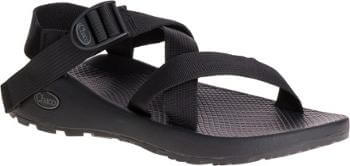
The Z1 Chacos are your standard Chaco. You’ll want to get the Z1’s with Unaweep tread because the other tread models don’t have nearly as much traction. Also, you’ll want to watch out for how much dirt and pebbles get into your shoe. Since your toe isn’t tied down by a strap, your freedom of movement will also let in more debris while you are hiking. Every once in a while you will have to stop and dump out your Chaco.
Places to buy:
Z2 Chacos
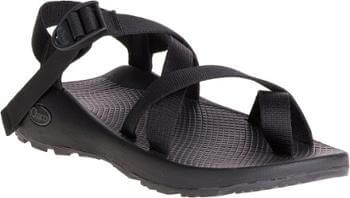
The Z2’s main difference from the Z1 is that the straps actually loop over your big toe to add more stability. Some people really hate this option as it restricts them too much. But you may find that you get a better purchase on rocks and slippery surfaces. Also, you won’t have to dump out your Chaco to get rid of dirt and pebbles nearly as much as you would have had to with the Z1.
Places to buy:
Z Cloud
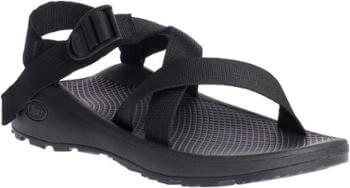
There is a Z Cloud series as well that actually adds a layer of cushion to the already comfortable Chaco. And the Banded Z Cloud has an extra strap included for better stability. Again, some people say the extra strap is restricting and they can’t function nearly as well with it, but others love the security it brings.
Places to buy:
Chaco Odyssey
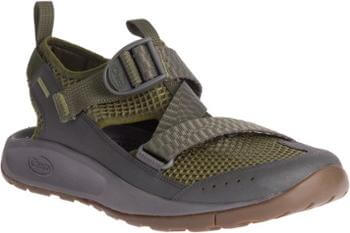
Lastly, you can buy Chacos that cover the whole front of your foot and most of your heel, but still have the same Chaco feel to them. They are called the Chaco Odyssey. This can be great because you will still get the comfort of the Chaco and relative freedom while being a little less exposed. This means that your feet will be a little safer from abrasion and you’ll have less skin exposed to the elements, which means you probably won’t go through nearly as much moisturizing foot cream.
Places to buy:
